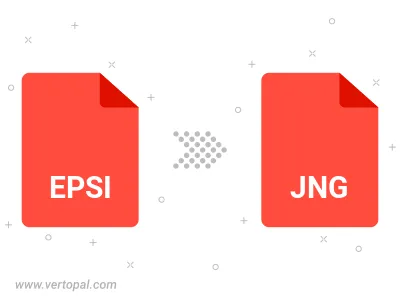Convert EPSI to JNG
Convert EPSI images to JNG format, edit and optimize images online and free.

EPSI, standing for Encapsulated PostScript Interchange, is a file extension used primarily in the printing and graphic design industries. It stores PostScript data along with a low-resolution preview in bitmap format, facilitating the visualization of graphic content in layout applications without needing to interpret the complex PostScript code. Introduced in the 1980s by Adobe Systems, EPSI files serve as a bridge between different software applications, ensuring consistent and high-quality output in various publishing workflows. Their efficiency and adaptability have made them a standard for exchange of graphic data in professional environments.
The JPEG Network Graphics (JNG) file extension is designed for storing JPEG-encoded image data within the PNG file format. Introduced as part of the MNG (Multiple-image Network Graphics) format, JNG was created to provide a flexible, high-quality image format that supports both lossy and lossless compression. It is particularly useful in applications requiring the integration of JPEG compression within a wider range of data types and multimedia elements. Though not widely adopted, JNG offers enhanced compatibility and versatility for complex imaging tasks in computer graphics and web development.
Select any EPSI image you wish to convert by clicking the Choose File button.
Use any available convert tools on the preview page, and click Convert.
Let the file convert, then you can download your JNG file right afterward.

To change EPSI format to JNG, upload your EPSI file to proceed to the preview page. Use any available tools if you want to edit and manipulate your EPSI file. Click on the convert button and wait for the convert to complete. Download the converted JNG file afterward.
Follow steps below if you have installed Vertopal CLI on your macOS system.
cd to EPSI file location or include path to your input file.Follow steps below if you have installed Vertopal CLI on your Windows system.
cd to EPSI file location or include path to your input file.Follow steps below if you have installed Vertopal CLI on your Linux system.
cd to EPSI file location or include path to your input file.